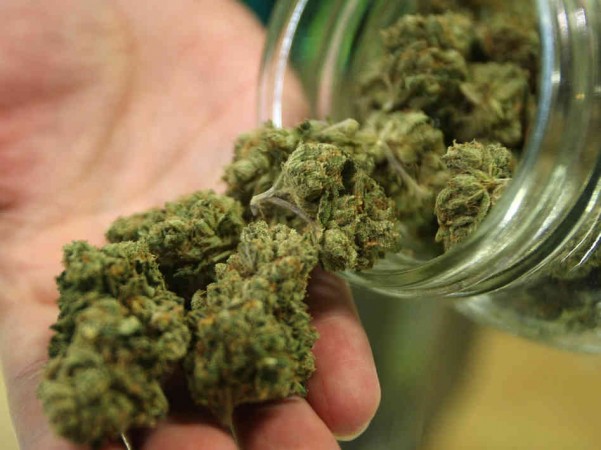
The mystery surrounding fibromyalgia has long-plagued the big pharmaceutical companies, many of whom seem entirely unable to develop an effective treatment or cure. However, while the drug’s impact on fibromyalgia remains poorly understood, in utter desperation, many sufferers have resorted to self-medicating with marijuana.
According to the National Institutes of Health, around five million Americans have the chronic disorder. Fibromyalgia affects the soft tissue and muscles, and typically presents with flu-like symptoms, musculoskeletal pain, muscle stiffness, painful joints, fatigue, insomnia, headaches, depression and irritable bowel syndrome (IBS). Many patients have also reported experiencing the so-called “fibro fog,” where confused sufferers have difficulty concentrating, remembering or performing basic tasks.
 The cause of fibromyalgia remains uncertain, but many theories have sought to unravel the long-standing mystery. Research has implicated a number of contributory risk factors in the disease’s manifestation, including physical and emotional stresses, hormonal imbalances, and changes in neurotransmitter levels in the brain. Like a number of rheumatic diseases, some scientists believe the disorder could have a genetic component, which is passed down from mother to daughter.
The cause of fibromyalgia remains uncertain, but many theories have sought to unravel the long-standing mystery. Research has implicated a number of contributory risk factors in the disease’s manifestation, including physical and emotional stresses, hormonal imbalances, and changes in neurotransmitter levels in the brain. Like a number of rheumatic diseases, some scientists believe the disorder could have a genetic component, which is passed down from mother to daughter.
While medical practitioners claim the syndrome is medically manageable, it appears we are no closer to solving the fibromyalgia mystery. However, this hasn’t deterred patients from hunting down alternative treatments.
Last year, the National Pain Report found that marijuana was rated the most effective drug for treating fibromyalgia patients. The surprise finding was discovered by the National Pain Foundation, after a survey was conducted using over 1,300 fibromyalgia sufferers.
Of the legal, FDA-approved drugs - Cymbalta (Duloxetine), Lyrica (Pregabalin) and Savella (Milnacipran) - few patients experienced any significant benefit. According to the National Pain Foundation, around 60 percent of patients thought that Cymbalta and Lyrica did nothing to help, while around 30 percent of patients thought the drugs helped “a little.” Meanwhile, 68 percent of patients felt Savella was of absolutely no medical benefit.
Thus far, these three licensed drugs have netted the major pharmaceutical companies huge profits, despite many patients arguing they do little to alleviate their symptoms. In addition, a number of patients have also reported a number of unpleasant side effects from taking one of the three afore-mentioned drugs.
The survey established that most fibro sufferers had not tried marijuana, likely owing to it remaining illegal in many U.S. states. In stark contrast to the other results, 62 percent of those people who had used marijuana claimed it was a “very effective” treatment for their symptoms, while 33 percent said it helped a little.
 Residents in Alaska, Colorado and Washington may have the option of easing their pain through marijuana use, but, until further changes to the law are made, that still leaves many millions of fibromyalgia patients who are not able to seek medical licenses for marijuana possession.
Residents in Alaska, Colorado and Washington may have the option of easing their pain through marijuana use, but, until further changes to the law are made, that still leaves many millions of fibromyalgia patients who are not able to seek medical licenses for marijuana possession.
So how does marijuana help treat the symptoms of fibromyalgia? Researchers believe marijuana triggers pain relief via the endocannabinoid system. The endocannabinoid system plays a crucial role in modulating inflammation and pain response. Marijuana boasts a range of cannabinoids that are similar to those found within our bodies; it is thought these plant-based cannabinoids, or phytocannabinoids, are capable of interacting with special receptors in the central and peripheral nervous systems. Some research has even suggested that clinical endocannabinoid deficiency (CECD) could explain the pathophysiology behind fibromyalgia, migraines and IBS.
A number of marijuana-derived drugs have been tested on fibromyalgia patients. For example, Nabilone - an analogue of THC - has proven effective in treating some fibromyalgia patients’ sleep disorders, and was found to be more effective than tried and tested drugs, like amitriptyline. Meanwhile, another THC-containing drug, called Sativex, is currently undergoing clinical trials in the United States for treating cancer pain. The drug is capable of easing inflammation and pain, with some researchers suggesting that its analgesic properties could hold promise for fibromyalgia sufferers.
A number of high-profile celebrities have also come forward in support of marijuana’s pain relieving applications, including Susan Sarandon, Danny Devito and Bill Maher, to name just a few. More recently, Oscar-winning actor Morgan Freeman called for nation-wide legalization of marijuana, after using the drug for his own ailments.
“Marijuana has many useful uses,” argued Freeman. “I have fibromyalgia pain in this arm, and the only thing that offers any relief is marijuana. They’re talking about kids who have grand mal seizures, and they’ve discovered that marijuana eases that down to where these children can have a life. That right there, to me, says, ‘Legalise it across the board!’”
While the fibromyalgia mystery appears to have eluded the pharmaceutical industry, thus far, many researchers believe marijuana could hold the key to effective pain relief. The enduring mystery surrounding fibromyalgia continues to cause immense suffering for those afflicted with the disease. However, with new marijuana-based derivatives currently in the process of being tested, along with ongoing changes to drug laws, fibromyalgia sufferers may finally get the relief they so desperately deserve.

